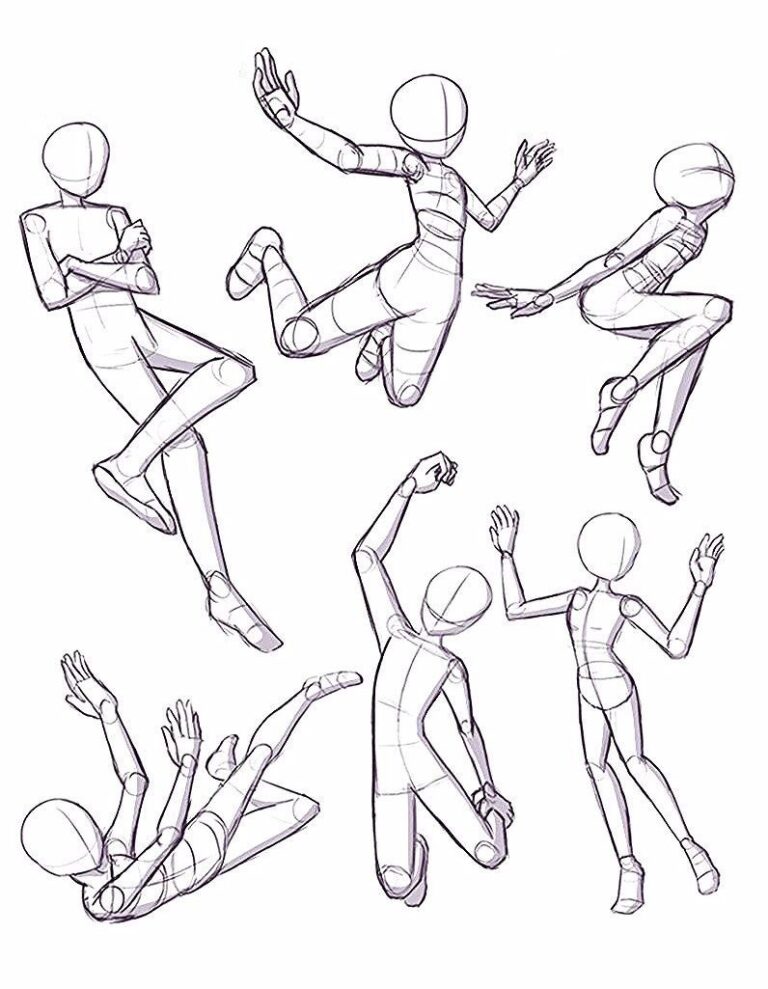

By understanding different lengths of body parts, you can form figures in different poses, manipulating their body parts to be in different positions. Once you understand the basic measurements, you can form figures in different poses.įor instance, you can utilize the measurements as a way of comparing the lengths of different body parts. Manipulating the Measurements for Different PosesĪgain, these measurements should not be held as a hard and fast rule to stick to, but rather as a loose guideline to help establish correct sizes in form. This is applicable to either female or male figures to create differences in height or size. To create differences in scale between the male and female figures, one can simply deduce the length of the segments for one of the figures whilst still keeping them evenly sized. The exact same can be done for the female body, as both the male and female figures utilize the same framework of measurements to place different body parts in their proportionate places. This means that we can use a ruler to draw a vertical line and then create seven equal increments that divide the body into its basic proportional values.

Male proportions are broken up into eight or seven segments that divide the body into equally divided portions. That being said, these proportions are to be used as guidelines to either follow or deviate from. However, it is essential to note that these segments change according to body types and when bodies are in different postures and poses.
#Easy person sketch interesting pose how to
In order to know how to draw a person correctly, we need to know that the human body is comprised of a certain number of segments. Now that we know what to expect, let us go through this tutorial on how to draw a person. This is where we can go through a process of how to draw a person step by step, from their foundation to wearing clothing, giving us a better understanding of how to draw humans. Once we have a good understanding of both proportions and scale, we will then move on to a drawing exercise, where we explore the use of these proportional guidelines to create personal sketches. In this tutorial, we will go through the fundamentals of how to construct both the male figure and female figure with correct proportions. Once you have the fundamental knowledge of how to draw a human, you will find that using this foundation to create different postures, movements, and positions becomes a lot easier and a lot more fun. In this tutorial, we will first look at the fundamentals of proportions and scale, which we can then utilize in our own personal sketches.

Learning how to draw a human is actually quite easy once the process is broken down into its basic stages. 5.2 How Do You Draw Clothes on a Person?.3.3.4 Step 4: Using Shading to Create Structure.3.3.3 Step 3: Drawing Over the Guidelines.3.3.1 Step 1: Lightly Sketching the Figure.3.2.4 Step 4: Using Shading to Create Structure.3.2.3 Step 3: Drawing Over the Guidelines.3.2.1 Step 1: Lightly Sketching the Figure.3.2 Sketch Two: Female Figure with Lifted Arm in Motion.3.1.4 Step 4: Using Shading to Create Structure.3.1.3 Step 3: Drawing Over the Guidelines.3.1.1 Step 1: Lightly Sketching the Figure.3 Applying These Concepts: How to Draw a Person Step-by-Step.2.1.3 Manipulating the Measurements for Different Poses.2.1 The Fundamentals of Drawing a Person.If someone you know doesn’t mind posing for you, you can do it at any time. Many communities have open-source sketching classes, with and without a teacher, to regularly draw a human figure. Well, leave the mid-tone areas of the body untouched. The light colors are done with a white gel pen, but any soft opaque material will do. In the pictures below, the dark tones are created by shading with ink, although you can take chalk, and charcoal, and pastel, and a pencil.

They will become the middle tone in your sketch, and you will only have to apply light and dark where necessary. For pastels and charcoal they are usually made in neutral shades. If the sketch is very long, the tinted paper will help to study the chiaroscuro carefully. Even a part of the back serves as the background, shading the model’s left hand on the first sketch. In the picture above, you can see that the dark background tones behind the shape can also indicate its shape.


 0 kommentar(er)
0 kommentar(er)
